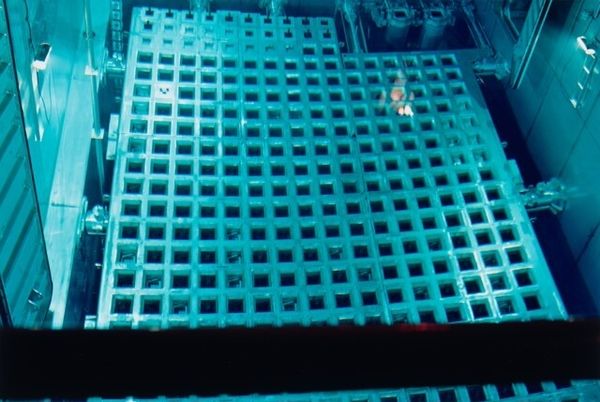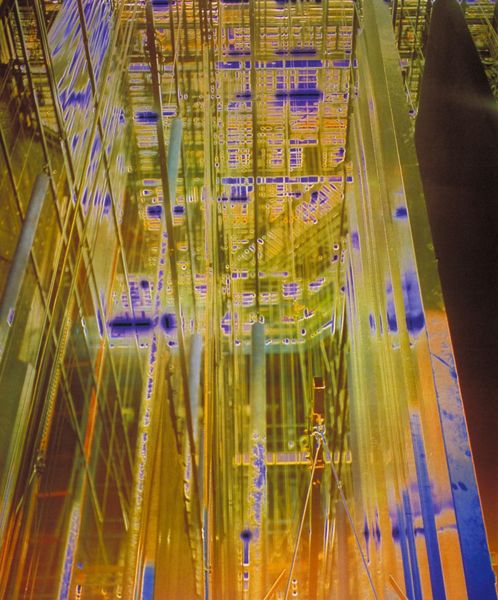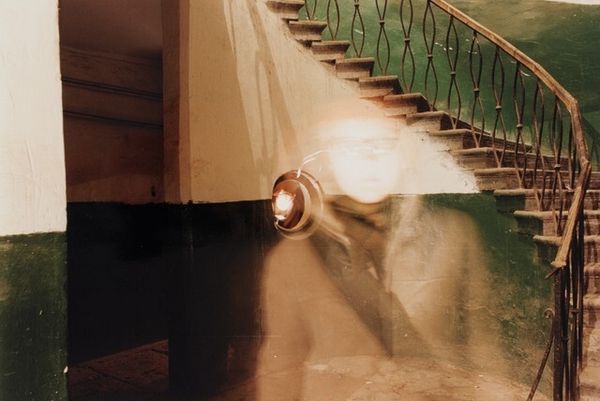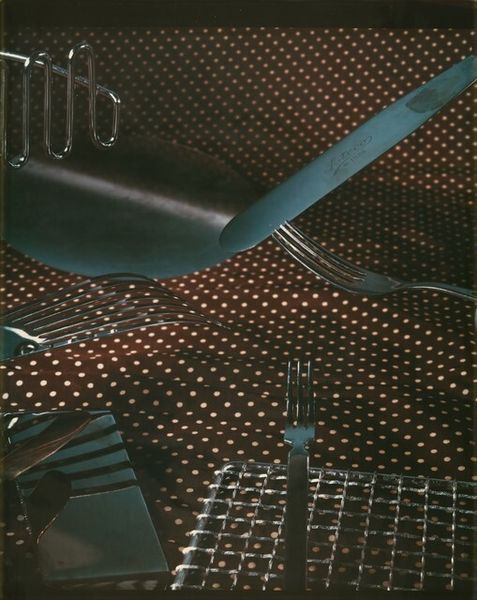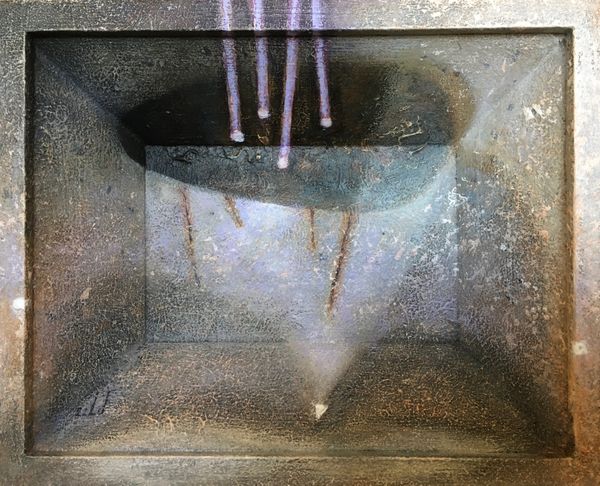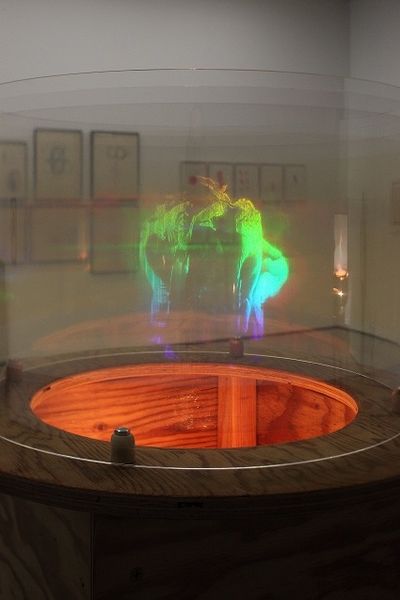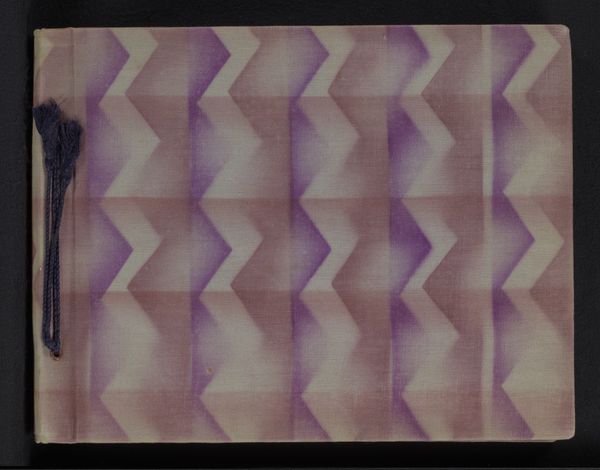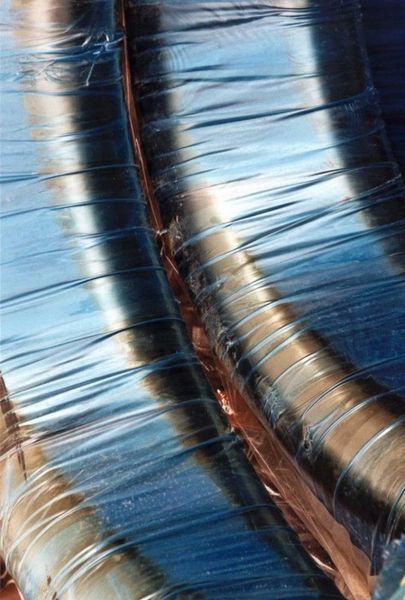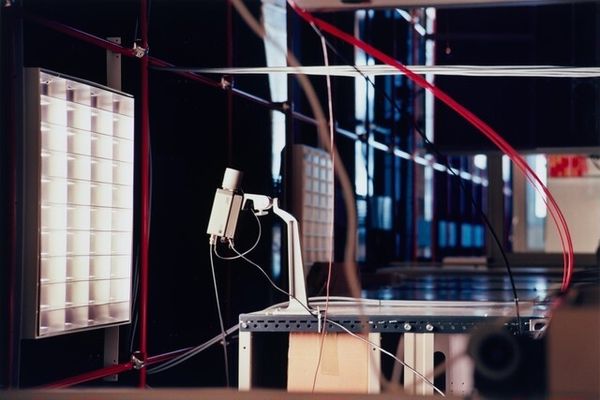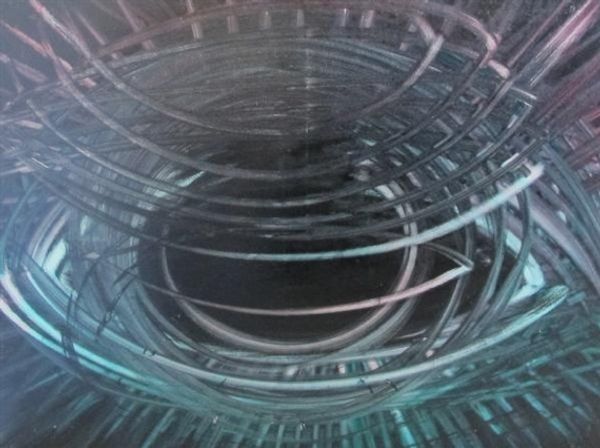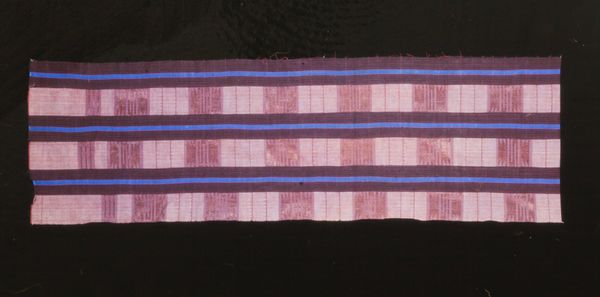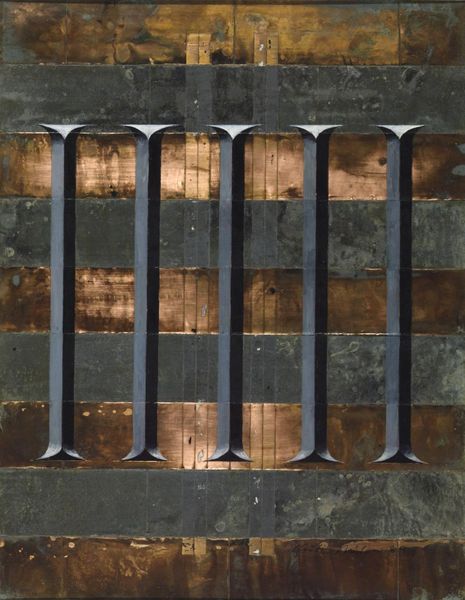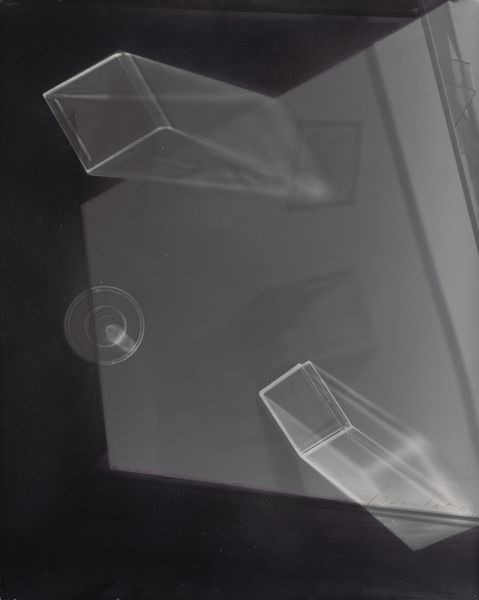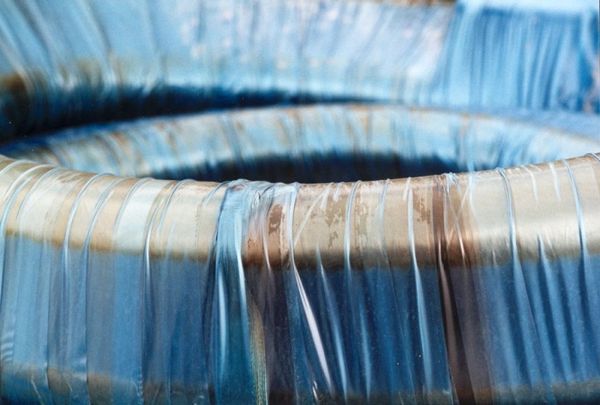
Dimensions: duration: 44min
Copyright: © Tacita Dean, courtesy Frith Street Gallery, London and Marian Goodman Gallery, New York/Paris | CC-BY-NC-ND 4.0 DEED, Photo: Tate
Editor: Tacita Dean's "Kodak" is a 44-minute film. The purple hues give it an ethereal quality, but the rigid lines offer a counterpoint. What do you see in this piece, looking at its formal structure? Curator: The composition is striking. Observe the interplay between the dominant violet tonality and the contrasting linear elements. Note how the vertical and diagonal lines create a complex, almost architectural structure within the filmic frame. Editor: So, the tension between color and line is key? Curator: Precisely. The film's material presence, its celluloid, is undeniable and the interplay between light and shadow are critical to experiencing the work. The artist uses the intrinsic elements of film to evoke a feeling, wouldn't you agree? Editor: I do. Focusing on those visual relationships really changes my perspective. Curator: Indeed, formalism provides a unique entry point.
Comments
Join the conversation
Join millions of artists and users on Artera today and experience the ultimate creative platform.
tate 8 months ago
⋮
Kodak 2006 documents the making of 16mm film stock inside a factory about to go out of business. Tacita Dean both celebrates the beauty of analogue filmmaking and mourns its demise. Today digital tools have almost completely replaced photochemical film equipment. Kodak was shot on 16mm film in one of the last places to make this type of film stock. It shows the Kodak factory in Chalon-sur-Saône, France. Dean made the film just before the plant permanently stopped production. Photochemical film is produced in darkness. On the day of shooting, the factory was running a test, giving Dean a rare opportunity to capture it with the lights on. Long static shots show details of machinery and staff working or taking breaks. The hum of equipment can be heard in the background. A red ‘safelight’, used for working with light sensitive film, recurs throughout the film as well as in the entrance to the projection space. Dean has worked mainly with analogue film since the early 1990s. She believes digital technologies cannot replace its unique qualities. She especially values the surprises the material brings. Digital technology, Dean says, ‘neither breathes nor wobbles, but tidies up our society.’ Her work often explores disused structures and materials that once stood as visions of the future. Here Dean reflects on film itself as a technology on the brink of extinction. Since Dean made this film, Kodak have started producing small amounts of moving image film again. This is due in part to the artist’s campaign to save film. Gallery label, January 2020
